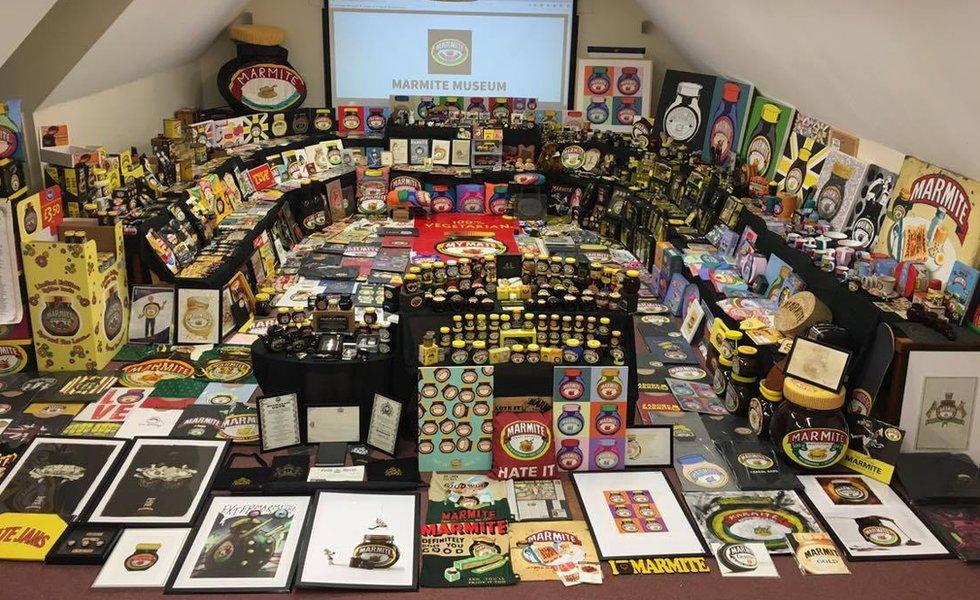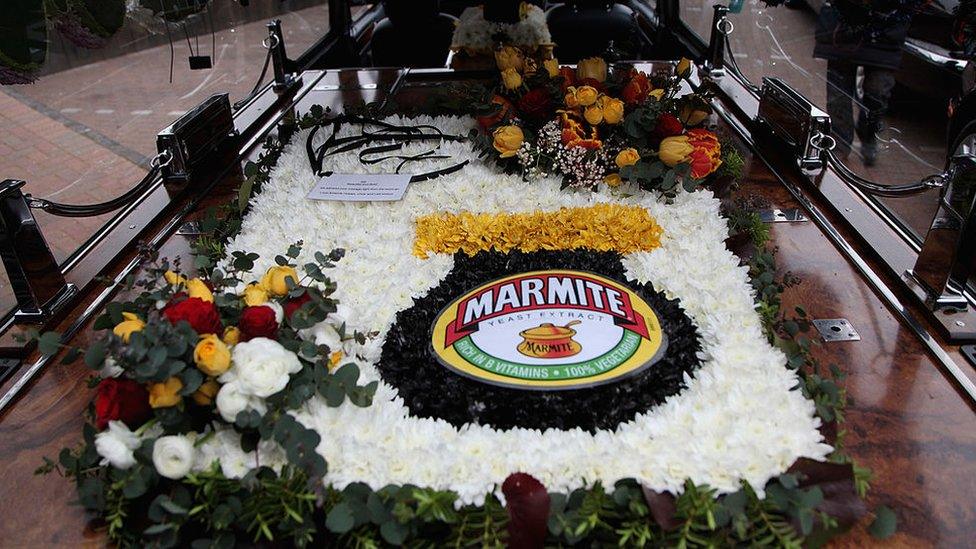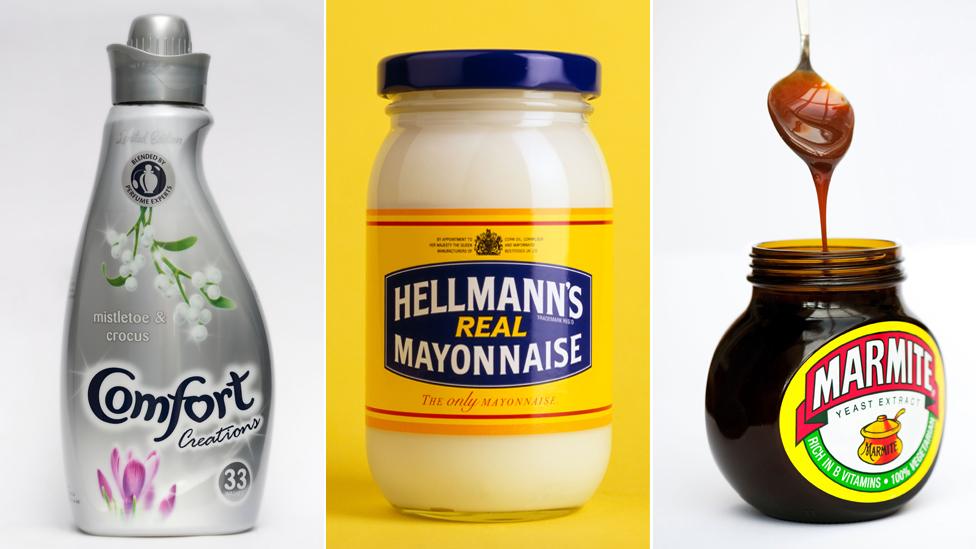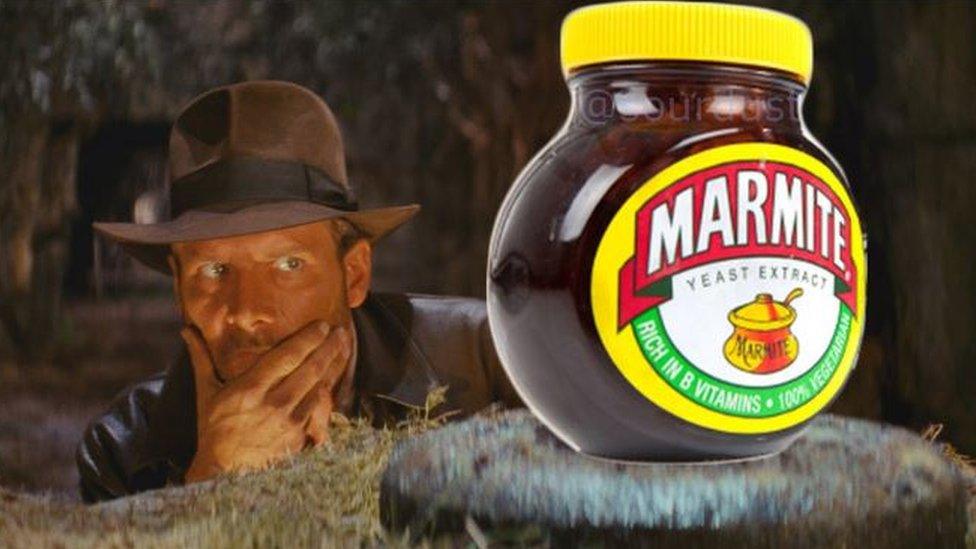Marmite: A potted history of the British-born spread
- Published

Both the French and the Germans have played a role in the creation of what is seen as a quintessentially British product
Panic spread across the UK as it emerged that the much-loved yeast extract Marmite was at risk of being removed from the nation's supermarket shelves. But what is the story behind this most British of brands?
The product that has been loved and hated around the world for more than 100 years was actually discovered by chance by a German scientist called Justus Liebig.
In the late 19th Century Liebig stumbled across the delicious realisation that brewer's yeast could be concentrated then eaten. Yum.
Not long after, in 1902, the Marmite Food Company was founded in Burton-upon-Trent, Staffordshire - a place where the raw ingredients were readily available from the town's many breweries.
Proving its international status, the controversial condiment was named after a French cooking pot, because British Marmite was originally supplied in earthenware vessels of a similar shape.
Since the 1920s, Marmite has been sold in its distinctive bulbous glass jars, with a picture of a marmite pot on the red and yellow label a reminder of the origins of its name.

Marmite's biggest fan?

It is safe to say that Tracy Matthews does not hate Marmite
Tracy Matthews, 48, from Cardiff, classes herself as a "Marmite superfan" and boasts what she thinks is the world's biggest collection of Marmite memorabilia.
"People only have to look at the jar and people know exactly what it is - even the people who hate it," she said.
"There's not many brands that could have that much impact when it comes to food items.
"The brand is more popular now than it ever has been, but it had its heyday when it first came out because it was the only food at the time that could give people vitamin B."

The early 20th Century saw Marmite become a classic British savoury treat as it was included in World War One rations. It would remain popular among troops and civilians alike in World War Two and beyond - it was sent out to homesick British troops in Kosovo in 1999.
The original recipe for Marmite contained yeast extract, salt, spices and celery.
Later, folic acid, vitamin B12, thiamin and riboflavin - vitamins that occur naturally in some foods - were added in high concentrations, but the exact composition of the spread remains a trade secret.
The yeast extract became so popular the Burton factory could not keep up, so the company converted a former brewery in Vauxhall in London into a second plant.

Marmite was even the subject of a floral display at reality TV star Jade Goody's funeral
The smell from the site was said by one resident to be "disgusting" although the tangy whiff of Marmite-making is no longer an issue as the factory closed in the 1960s.
Today, the Marmite plant in Burton produces about 50 million jars a year, most of which are consumed domestically.
While beloved of Brits - if not those who live within smelling distance of its production - the brand is not so popular in other parts of the world.
In 2011, Marmite was banned in Denmark because it fell foul of the country's law restricting products fortified with added vitamins.
You love it or hate it - but what do people from around the global make of the British spread?
It can be almost impossible to find on the shelves of many foreign countries' shops, and has been named as one of the top food items British people take abroad with them.
In 2000, as Marmite entered its third century of dividing opinion, the brand, which had been bought by CPC International Inc, merged with international goods supplier Unilever.
But despite its status as being part of a vast multinational company's portfolio, even today this most British of products is still made in Burton.
Residents remained so proud of the spread that in 2010 a monument, nicknamed the "Monumite", was put up in the centre of the town, external, making Marmite quite literally an iconic product.
Mr Liebig, the lovers of Marmite salute you. Here's to 100 more years of a love-hate relationship.
- Published13 October 2016

- Published13 October 2016

- Published13 October 2016

- Published13 October 2016